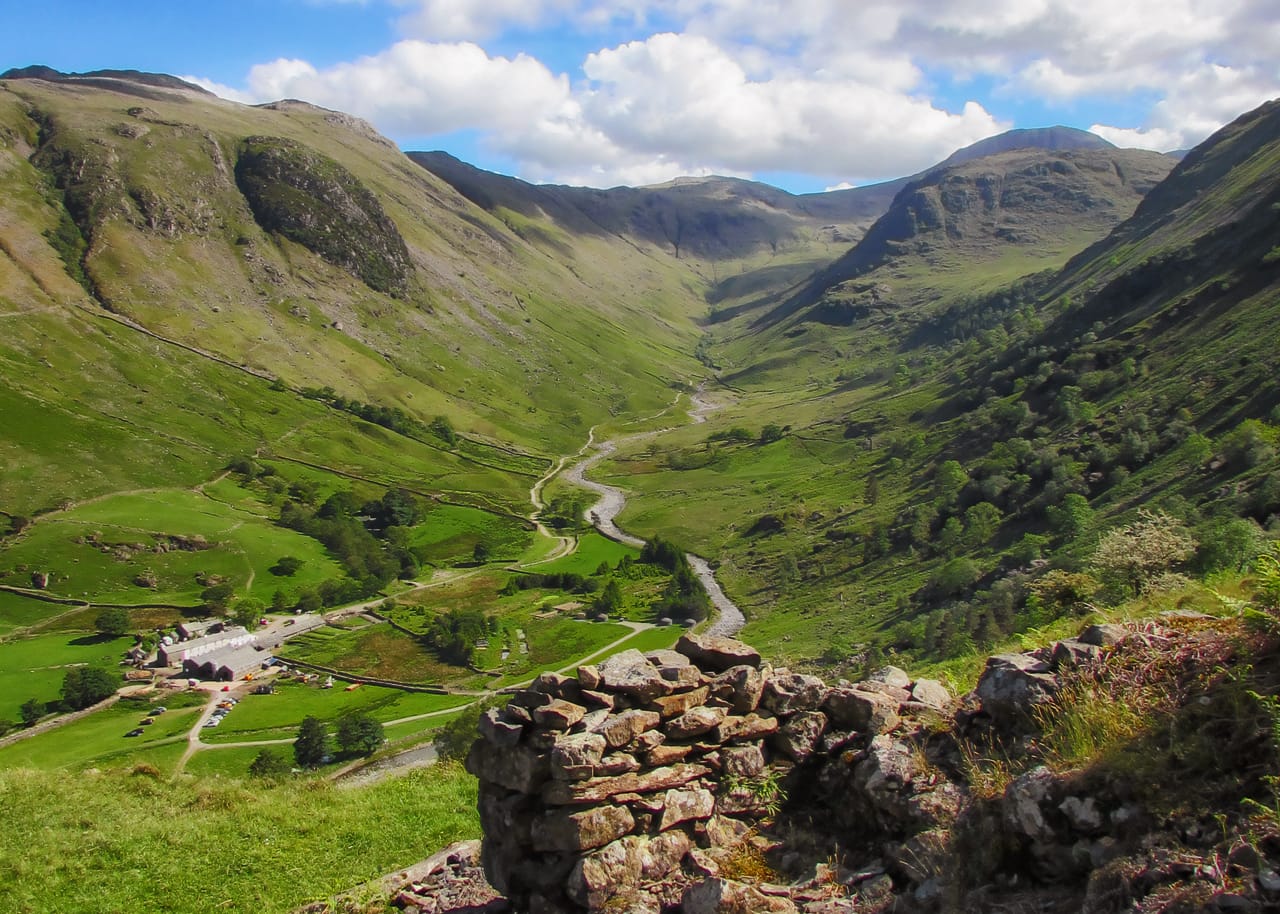Our Herdy Line design may seem like a departure from our love of bold colours. The inspiration behind this striking black-on-white design is the historic graphite mining industry here in the Lake District. Whilst probably the most well-known use of graphite is in making graphite pencils, ultimately giving rise to the Keswick pencil industry in the 18th century, this valuable raw material was used long before this date for many other applications.
How Are Graphite Pencils & Lake District Sheep Connected?

Graphite is pure elemental carbon where the carbon atoms are arranged in a planar or layered structure. It is soft and slippery to the touch, and its hardness is less than one on the Mohs scale (a method of comparing mineral hardness - created in 1822 by German Geologist Friedrich Mohs). Another well-known form of pure carbon is diamond. In a diamond the atoms are arranged tetrahedrally making it the hardest known material, and rated the maximum 10 on Mohs scale.
Although graphite was discovered sometime in the 16th century, it wasn’t given its modern name until 200-years later in the 18th century.
Abraham Gottlob Werner, a German mineralogist, named it from the Ancient Greek word γραφειν (“gráphein”), which means to write/draw/record (Ancient Greek is also where we get words like photograph, “light record”).
The story of Borrowdale graphite mining begins in the 16th century, probably in 1555. This is when the Commissioners of the Company of Mines Royal visited the site, located alongside Newhouse Gill which streams from Grey Knotts 1,300 ft above the Seathwaite valley.

The Commissioners claimed the site for The Crown and leased out the mining rights to a succession of people. The lease was taken up by the Hochstetter brothers in 1607. They were German mining experts and were already involved in the Keswick copper mines.
As an aside, it is from German miners that Cumbria developed one of the county’s greatest food exports: the Cumberland Sausage!
The discovery of graphite at Seathwaite in Borrowdale sparked centuries of graphite mining around the world including Spain, East Indies, and Mexico. Despite this, nowhere in the world has there ever been graphite as solid and pure as what was found in Borrowdale. In fact, Borrowdale graphite remains the only site of graphite mining in the entirety of the UK.
What does graphite and graphite pencils have to do with sheep?

It took a couple of centuries after the discovery of Borrowdale graphite in the 16th century before pencils were made using the material.
The first use of graphite was for marking sheep and rust-proofing stoves, and it’s a good bet that the sheep in question would have been Herdwicks!
As is common in human history when new minerals are discovered, graphite’s potential medicinal properties were experimented with. People would grind graphite into a powder and mix it with wine or ale to cure ailments such as colic, gallstones, and strangury. Likely, this probably did more harm than good. If ingested, graphite powder can cause gastrointestinal irritation resulting severe illness.
Fortunately, its use quickly moved beyond this stage and it was discovered that graphite was an excellent industrial lubricant. It was used to lubricate ship rigging, improve moulds and castings, and for polishing and protecting ironware.


During the reign of Queen Elizabeth I, it was used to make moulds for cannon balls. This resulted in rounder, smoother balls that could be fired further, improving the already impressive strength of the English Navy.
Because of these industrial and military uses, demand in premium graphite grew massively. Per ton, the value of graphite increased from £18 in 1646 to £3,920 in 1804. To put that in the context of today’s money, the value of graphite grew from £4,068.27 per ton to £401,158.23 per ton, a 9760% increase!
Unfortunately, the increasing value of graphite attracted thieves and other nefarious characters. It got so bad that in 1752 an Act of Parliament was passed making unlawful entry into a graphite mine a crime. Guardhouses were erected around the mine in Seathwaite to protect the precious resources within.
With the protection of the law and constantly growing price, it’s fair to say that the Crown enjoyed a monopoly on the Borrowdale graphite mine. This was aided by working the mine irregularly; after discovering a large vein of graphite the mine would close, sometimes for up to seven years, keeping the price of graphite artificially high. In fact, penalty clauses were written into sales agreements in the 18th century to make sure these closures happened.
The advent of the Keswick pencil factories

In the late 18th century Keswick started to become well-known for producing some of the finest pencils in the world. They were handmade by a variety of small workshops using pure, solid sticks of graphite from the nearby Seathwaite graphite mine.
Mining operations in Borrowdale wound down towards the end of the 19th century as the graphite deposits were exhausted. Added to that, most pencil manufacturers were also switching to pencil pigments made from the economical blend of graphite powder and clay powder, imported from outside the UK. In 1891 the graphite mine at Seathwaite closed for the final time.
The first pencil factory was opened in Keswick by Banks, Son & Co. in 1831. The company grew and changed ownership over time, becoming the Cumberland Pencil Company in 1916 and introduced the first ever colour pencil. The company later rebranded as the Derwent Cumberland Pencil Co. before being bought by US stationery corporation ACCO Brands (formerly Rexel) in 1980.
Today Keswick is famous for being the home of the Derwent Pencil Museum, which first opened its doors in 1981. Did ewe know that it houses one of the largest colouring pencils in the world? It was made in 2001, measures 26 ft long and weighs over 70 stone!
From graphite pencils to the birth of Herdy

Herdy was created after co-founders and designers Spencer and Diane Hannah chanced upon a Herdwick ewe in the Langdales, peeping at them with its cute and smiley face.
After a photo was captured, it was only natural for Spencer and Diane to turn to the pencil and make those preliminary sketches that ultimately led to the creation of the Herdy brand.
With the Herdy Line design we celebrate the story of Herdy, the Herdwick, and Borrowdale graphite coming full circle.
We hope you love this design as much as we do.








